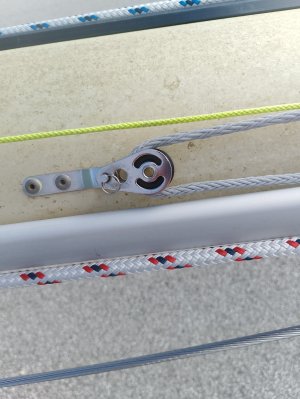PaulGS
Member
In installing my own lazyjack system I'm minded to run the line on the mast through a pad eye only ('D' on a flat plate type) rather than use a block which seems the usual way. To me, a block seems overkill and likely to be noisy. Am I wrong-headed about this?

